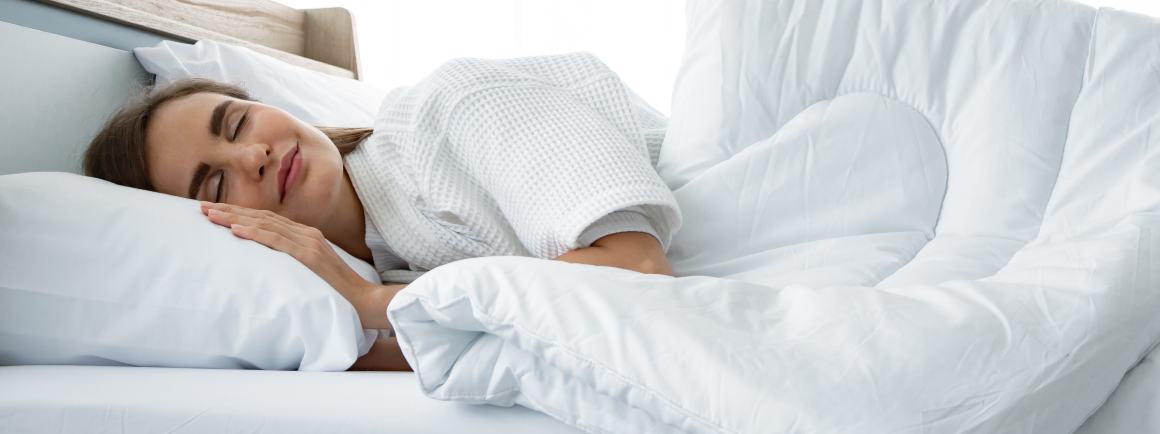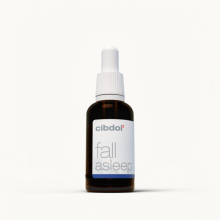What is the Ultimate sleep pattern?
Published:
Sleep is essential for health and wellbeing. Getting quality sleep ensures we have enough energy for the day ahead and allows our bodies to repair themselves overnight. With so many demands on our time, achieving a healthy sleep pattern has become increasingly difficult. Understanding the science behind sleep and evaluating different sleep cycles can help determine the optimal sleep schedule for each individual. This comprehensive guide examines the benefits of various sleep patterns to uncover what may be the ultimate sleep routine.
Contents:
- An Introduction to Sleep Patterns
- The Science Behind Sleep Patterns
- Common Types of Sleep Patterns
- Key Factors for Determining the Optimal Sleep Pattern
- Sleep Expert Opinions on the Ultimate Sleep Pattern
- Tips to Improve Your Sleep Pattern
- The Takeaway: Prioritize Quality Sleep tailored to Your Needs
- Frequently Asked Questions on Sleep Patterns

An Introduction to Sleep Patterns
A sleep pattern simply refers to the timing and duration of a person's sleep. It involves when you go to bed, when you wake up, and the total hours slept. While sleep requirements can vary by individual, most healthy adults need 7-9 hours of sleep per night. However, the time of day you sleep and how it is broken up differs across sleep patterns.
Your sleep pattern impacts how refreshed you feel in the morning and how well you function throughout the day. An inconsistent sleep routine can negatively affect concentration, memory, mood, and even immune system functioning. Optimizing your sleep pattern is essential for achieving overall wellness.
The Science Behind Sleep Patterns
There is extensive scientific research on the different stages of sleep and biological factors that influence sleep patterns. Understanding this science sheds light on how to determine the ideal sleep routine.
The Role of Circadian Rhythms
The circadian rhythm is a cycle that regulates physiological processes over a 24-hour period. It is influenced by environmental cues like sunlight that signal when to feel awake or sleepy.
The circadian rhythm controls the release of hormones like cortisol and melatonin. Cortisol increases in the morning to help you feel alert. Melatonin rises in the evening to induce sleepiness. Aligning your sleep pattern with your natural circadian rhythm results in better quality sleep.
The Stages of Sleep
Sleep is composed of two main types: non-REM (NREM) and REM. NREM consists of three stages:
- Stage 1: Light sleep during the transition between wakefulness and sleep. Your eyes movements slow down and muscle activity decreases.
- Stage 2: Restful sleep where your body temperature drops and heart rate slows. You become disengaged from your surroundings.
- Stage 3: Deep sleep where the body repairs itself. Hormones are released and muscles relax. Waking up is more difficult from this stage.
After NREM sleep, you enter REM sleep characterized by rapid eye movement and dreaming. Although REM comprises only 25% of sleep, it is key for memory consolidation and cognitive functioning. A good sleep pattern involves cycling between NREM and REM sleep multiple times throughout the night.
Factors Influencing Sleep Patterns
Sleep patterns are impacted by a number of biological factors:
- Age - Sleep needs change across the lifespan. Newborns may sleep 16-18 hours while adults need 7-9 hours daily. Sleep patterns also change as we age.
- Genetics - Your genes partly determine whether you are an early riser or night owl. This influences when you naturally want to sleep.
- Health - Medical conditions like insomnia and sleep apnea can disrupt normal sleep cycles. Medications, drugs, and alcohol also impair sleep.
- Lifestyle - Exercise, diet, and stress levels affect your ability to fall and stay asleep. Environmental factors like light, noise, and temperature also play a role.
Understanding these factors is key to choosing or modifying a sleep pattern that works best for your individual needs and situation.
Common Types of Sleep Patterns
There are three main types of sleep patterns that individuals follow:
Monophasic
This involves sleeping in a single block at night. The typical monophasic schedule means sleeping for 7-9 hours between 10 pm and 6 am.
Benefits: Aligns with circadian rhythm. Leads to high quality NREM and REM sleep. Easy to maintain for early risers. Fits with traditional work/school schedules.
Example Cultures: Most Western cultures follow this sleep pattern.
Biphasic
This consists of two sleep blocks per day. For example, 6 hours at night plus a 20-30 minute nap in the afternoon.
Benefits: Provides mental boost from nap. May improve memory and learning. Fits circadian rhythm for some night owls.
Example Cultures: Siesta sleep pattern common in Latin American countries.
Polyphasic
This divides sleep into multiple short blocks round the clock. For example, five 30-minute naps spread throughout the day.
Benefits: Increases alertness with frequent sleep. Extra productivity from less total sleep time. May suit unusual work schedules.
Example Schedules: Uberman (six 30-minute naps), Dymaxion (four 30-minute naps), and Everyman (one 3-hour sleep plus three 20-minute naps).
While these categories provide a general overview of sleep patterns, there are infinite variations and combinations of schedules that individuals can follow. The suitability of any pattern depends on your unique needs and lifestyle.
Key Factors for Determining the Optimal Sleep Pattern
With myriad sleep cycle options, how do you narrow down the ultimate routine? Here are key factors to consider:
Chronotype
Your chronotype or "body clock" determines when you naturally feel drowsy or energetic. Night owls staying up late and morning larks waking early have different circadian rhythms. Base your sleep pattern around your innate chronotype for optimal rest.
Work and Lifestyle Demands
Occupations like doctors working overnight shifts need a different sleep pattern than 9-5 office professionals. If you have an irregular work schedule or demanding lifestyle, you may benefit from split sleep. Choose patterns that align with your daily obligations.
Health Conditions
Medical issues like sleep apnea or chronic pain can impair sleep. Seek treatment and adjust your sleep pattern under your doctor's guidance. Those with conditions like bipolar disorder are ultra-sensitive to sleep cycle disruptions. Maintaining consistency is key.
Personal Preference
There is no universally perfect sleep pattern. You may find a shorter biphasic or polyphasic routine mentally stimulating. Or prefer a longer monophasic schedule for uninterrupted rest. Experiment to discover your own optimal cycle based on subjective preferences.
Sleep Expert Opinions on the Ultimate Sleep Pattern
Sleep specialists and researchers provide valuable insights on the advantages of different sleep cycles:
Recommendations from Sleep Experts
Most sleep experts recommend monophasic sleep for the general population. Dr. Rafael Pelayo at the Stanford Sleep Medicine Center states: “The best sleep pattern is to sleep 7 to 8 hours at night on a regular basis”. The American Academy of Sleep Medicine also endorses a single nightly sleep block. They caution against polyphasic schedules that lead to poor sleep quality.
However, some experts believe biphasic schedules with an afternoon siesta provide additional cognitive benefits. Professor Sara Mednick who authored Take a Nap! Change Your Life says: “The ideal is to have a long sleep at night, and then supplement it with a nap”.
Scientific Research on Sleep Patterns
Studies comparing monophasic and polyphasic sleep are limited. But research does confirm that consolidated nighttime sleep aligns best with circadian rhythms. And that adequate NREM/REM cycles are critical for optimal functioning. However, individuals can adapt to different routines based on necessity. So no definitive “ultimate” pattern exists.
Overall, experts agree sleep requirements are highly individualized. Following your personalized sleep needs and chronotype is key. Sticking to a consistent schedule also provides greater benefits than the pattern itself.
Tips to Improve Your Sleep Pattern
Redesigning your sleep pattern takes effort but can transform your mornings and days. Here are tips to optimize your sleep:
Optimize Your Sleep Environment
Make sure your bedroom is cool, quiet, and dark. Use blackout curtains, a fan or white noise machine, and ensure ideal temperature. Also, reserve the bedroom only for sleep.
Establish a Soothing Routine
Perform relaxing activities before bed like reading, gentle yoga, or taking a bath. Avoid stimulants like bright screens. Waking up at a consistent time also stabilizes your cycle.
Try Sleep Aids If Required
Discuss supplements like melatonin or light therapy with your doctor. Medications or cognitive behavioral therapy can help for chronic issues like insomnia.
Small tweaks to your sleep habits can have big payoffs. Be flexible and patient - changing patterns takes time. But the benefits for your mood, productivity and wellbeing make it worthwhile.
The Takeaway: Prioritize Quality Sleep tailored to Your Needs
There are many different sleep cycle options from monophasic to polyphasic patterns. The ideal routine depends on your chronotype, lifestyle, and health needs. Align your schedule with your natural circadian rhythm as much as possible. Consistency also provides more benefits than the pattern itself. Experiment and select what provides optimal rest and functioning for your individual needs.
Quality sleep is crucial for supporting all aspects of health. Make customizing your sleep pattern a priority not just for wellness but for improving every day. Sweet dreams!
Frequently Asked Questions on Sleep Patterns
Basics of Sleep Patterns
What is a sleep pattern?
A sleep pattern refers to the timing, duration, and scheduling of an individual's sleep. It involves factors like bedtime, wake time, naps, and total sleep over 24 hours.
What are the main types of sleep patterns?
The three main sleep pattern categories are monophasic (single sleep period), biphasic (two sleep periods per day), and polyphasic (multiple sleep periods per day).
How much sleep do adults need?
Most healthy adults require 7-9 hours of sleep per night. However, individual sleep needs can vary significantly.
Optimizing Sleep Patterns
How can I determine my optimal sleep pattern?
Consider your unique sleep requirements based on age, chronotype, health conditions, and lifestyle demands. Experiment with different schedules to find one that makes you feel well-rested.
I have trouble sleeping at night. What should I do?
Try improving your sleep hygiene by keeping a consistent bedtime routine, limiting blue light exposure at night, and optimizing your sleep environment. Consult a doctor if problems persist.
Can I train myself to need less sleep?
While you can acclimate to polyphasic schedules with frequent naps, most people still need a minimum of 6 hours of consolidated nighttime sleep for optimal health and cognitive performance.
Comparing Sleep Patterns
Which is better: monophasic or biphasic sleep?
Monophasic sleep aligns best with your circadian rhythm for most people. Biphasic can provide added energy with an afternoon nap, but may disrupt sleep quality at night.
What are the pros and cons of polyphasic sleep?
Potential benefits are increased alertness and productivity with frequent naps. Drawbacks are difficulty adjusting and potentially inadequate NREM/REM sleep, which could impair cognitive functioning.
How quickly can I adjust to a new sleep pattern?
It takes most people 2-3 weeks to adapt to a significantly different sleep schedule. Gradual change eases the transition.
Sleep Patterns for Shift Work
What sleep pattern works best for overnight shift workers?
Research suggests a pattern with a long nighttime sleep right before the shift, a short nap during the shift, and gradual delay of morning sleep after the shift.
Should I nap before or after a night shift?
Napping before a night shift can decrease alertness. Short naps of 20-30 minutes during the shift help boost performance.
What is the best way to transition between day and night shifts?
Gradually shift your sleep timing by 1-2 hours per day. Maintain consistency with sleep and meals on your days off. Use blackout curtains to optimize daytime sleep.
Sleep Patterns for Health Conditions
How can I improve my sleep pattern if I have insomnia?
Follow good sleep hygiene and create a relaxing bedtime routine. If problems persist, consult your doctor about cognitive behavioral therapy or medications to promote healthy sleep.
What sleep pattern is recommended for sleep apnea patients?
Try to maintain consistency with your prescribed CPAP therapy. Some patients benefit from biphasic sleep with a daytime nap. Consult your sleep doctor for customized advice.
Is it safe for pregnant women to nap during the day?
Yes, a daytime nap of 30-60 minutes can be very beneficial during pregnancy and poses no risk. Maintain a consistent nighttime sleep schedule as well.
Resources used to write this article
American Academy of Sleep Medicine. (2020). Healthy Sleep Habits. https://aasm.org/healthy-sleep-habits/
Czeisler, C. A. (2021). Circadian Rhythms. The New England Journal of Medicine, 385(24), 2297–2305. https://doi.org/10.1056/nejmra2026185
Division of Sleep Medicine at Harvard Medical School. (2007). Natural Patterns of Sleep. http://healthysleep.med.harvard.edu/healthy/science/what/sleep-patterns-rem-nrem
Mednick, S. C., & Ehrman, C. (2006). Take a Nap! Change Your Life. Workman Publishing.
National Institute of Neurological Disorders and Stroke. (2019). Brain Basics: Understanding Sleep. https://www.ninds.nih.gov/Disorders/Patient-Caregiver-Education/Understanding-Sleep
Pelayo, R. (2017). Stanford Center for Sleep Sciences and Medicine. https://sleep.stanford.edu
Watson, N. F., Badr, M. S., Belenky, G., Bliwise, D. L., Buxton, O. M., Buysse, D., Dinges, D. F., Gangwisch, J., Grandner, M. A., Kushida, C., Malhotra, R. K., Martin, J. L., Patel, S. R., Quan, S. F., Tasali, E. (2015). Recommended Amount of Sleep for a Healthy Adult: A Joint Consensus Statement of the American Academy of Sleep Medicine and Sleep Research Society. Sleep, 38(6), 843–844. https://doi.org/10.5665/sleep.4716














